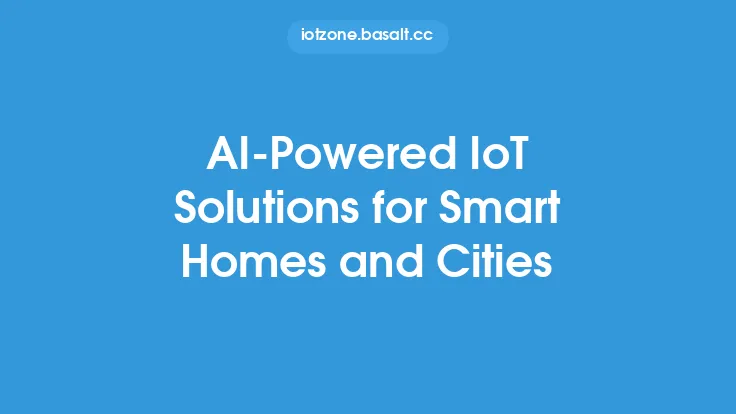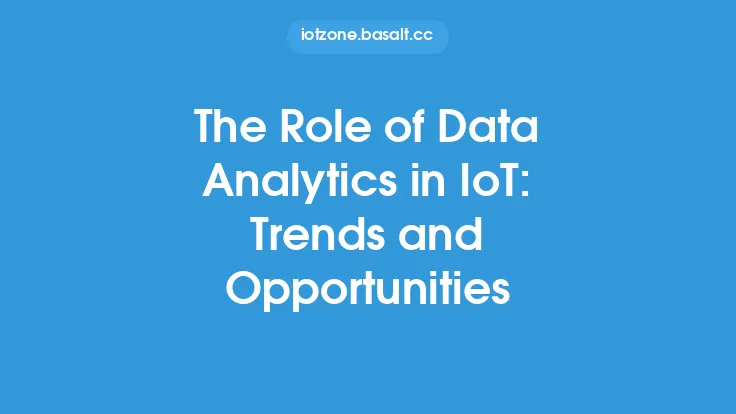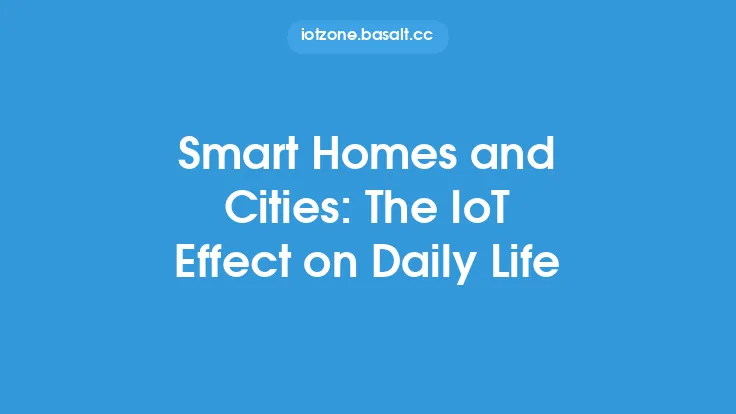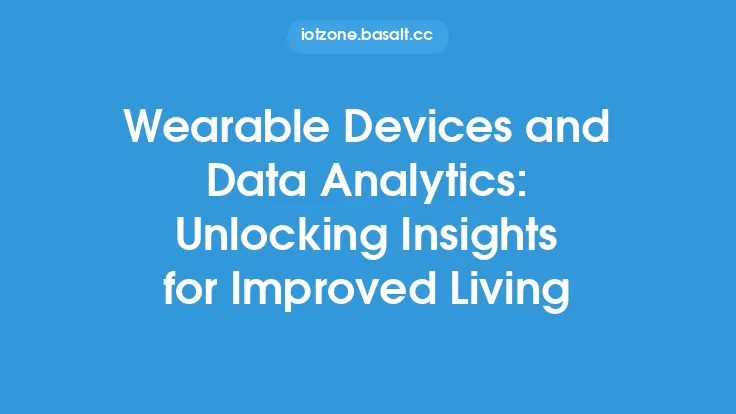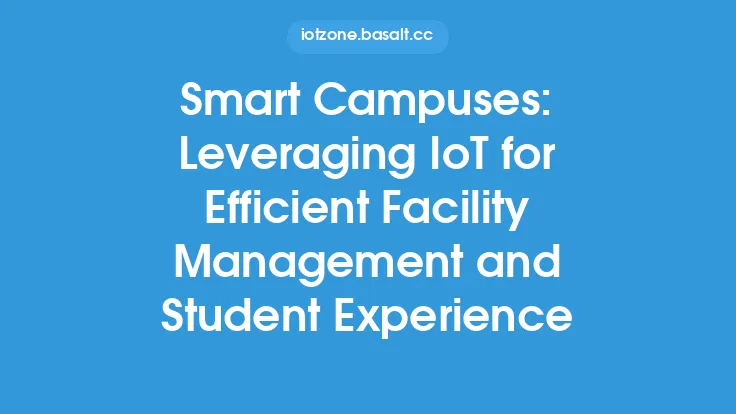The concept of smart cities and infrastructure has been gaining momentum in recent years, with the aim of creating more efficient, sustainable, and livable urban environments. At the heart of this concept lies the Internet of Things (IoT), which enables the connection and interaction of various devices, sensors, and systems to collect and analyze data. IoT data analytics plays a crucial role in this context, as it helps to extract insights and meaningful information from the vast amounts of data generated by these devices and sensors. In this article, we will delve into the world of IoT data analytics for smart cities and infrastructure, exploring its applications, benefits, and technical aspects.
Introduction to Smart Cities and Infrastructure
Smart cities and infrastructure refer to the integration of technology, data, and analytics to create more efficient, sustainable, and livable urban environments. This concept involves the use of various technologies, including IoT, big data, and analytics, to manage and optimize urban systems, such as transportation, energy, water, and waste management. The goal of smart cities and infrastructure is to improve the quality of life for citizens, reduce costs, and enhance the overall efficiency of urban operations.
IoT Data Analytics for Smart Cities
IoT data analytics is a critical component of smart cities and infrastructure, as it enables the analysis and interpretation of data generated by various devices and sensors. This data can come from sources such as traffic sensors, energy meters, water quality sensors, and waste management systems. By analyzing this data, city officials and managers can gain insights into various aspects of urban operations, such as traffic patterns, energy consumption, water usage, and waste generation. These insights can be used to optimize urban systems, reduce costs, and improve the quality of life for citizens.
Applications of IoT Data Analytics in Smart Cities
IoT data analytics has a wide range of applications in smart cities, including:
- Traffic management: IoT data analytics can be used to analyze traffic patterns, optimize traffic signal timing, and reduce congestion.
- Energy management: IoT data analytics can be used to analyze energy consumption patterns, optimize energy usage, and reduce energy waste.
- Water management: IoT data analytics can be used to analyze water usage patterns, detect leaks, and optimize water distribution.
- Waste management: IoT data analytics can be used to analyze waste generation patterns, optimize waste collection routes, and reduce waste disposal costs.
- Public safety: IoT data analytics can be used to analyze crime patterns, optimize emergency response times, and improve public safety.
Technical Aspects of IoT Data Analytics
IoT data analytics involves the use of various technologies, including:
- Data ingestion: This refers to the process of collecting and processing data from various devices and sensors.
- Data storage: This refers to the process of storing and managing large amounts of data generated by IoT devices and sensors.
- Data processing: This refers to the process of analyzing and interpreting data using various analytics tools and techniques.
- Data visualization: This refers to the process of presenting data in a meaningful and intuitive way, using various visualization tools and techniques.
- Machine learning: This refers to the use of algorithms and statistical models to analyze and interpret data, and make predictions or recommendations.
Benefits of IoT Data Analytics for Smart Cities
The benefits of IoT data analytics for smart cities are numerous, including:
- Improved efficiency: IoT data analytics can help optimize urban systems, reduce costs, and improve the overall efficiency of urban operations.
- Enhanced sustainability: IoT data analytics can help reduce energy consumption, water usage, and waste generation, making cities more sustainable and environmentally friendly.
- Better decision-making: IoT data analytics can provide city officials and managers with data-driven insights, enabling them to make informed decisions and improve the quality of life for citizens.
- Increased citizen engagement: IoT data analytics can provide citizens with access to data and information, enabling them to participate in the decision-making process and improve their overall quality of life.
Challenges and Limitations of IoT Data Analytics
Despite the benefits of IoT data analytics for smart cities, there are several challenges and limitations that need to be addressed, including:
- Data quality: IoT data analytics requires high-quality data, which can be affected by various factors, such as sensor accuracy, data transmission errors, and data storage limitations.
- Data security: IoT data analytics involves the collection and analysis of sensitive data, which requires robust security measures to protect against cyber threats and data breaches.
- Scalability: IoT data analytics requires scalable solutions that can handle large amounts of data generated by various devices and sensors.
- Interoperability: IoT data analytics requires interoperable solutions that can integrate with various devices, sensors, and systems, and provide a unified view of urban operations.
Future of IoT Data Analytics for Smart Cities
The future of IoT data analytics for smart cities is promising, with various trends and technologies emerging, including:
- Edge computing: This refers to the processing of data at the edge of the network, closer to the source of the data, which can improve real-time analytics and reduce latency.
- Artificial intelligence: This refers to the use of AI algorithms and machine learning models to analyze and interpret data, and make predictions or recommendations.
- 5G networks: This refers to the use of high-speed, low-latency 5G networks to support IoT data analytics and enable real-time decision-making.
- Smart city platforms: This refers to the development of integrated platforms that can manage and analyze data from various devices, sensors, and systems, and provide a unified view of urban operations.
Conclusion
IoT data analytics is a critical component of smart cities and infrastructure, enabling the analysis and interpretation of data generated by various devices and sensors. By leveraging IoT data analytics, city officials and managers can gain insights into various aspects of urban operations, optimize urban systems, reduce costs, and improve the quality of life for citizens. While there are challenges and limitations to be addressed, the future of IoT data analytics for smart cities is promising, with various trends and technologies emerging to support real-time decision-making, improved efficiency, and enhanced sustainability.
